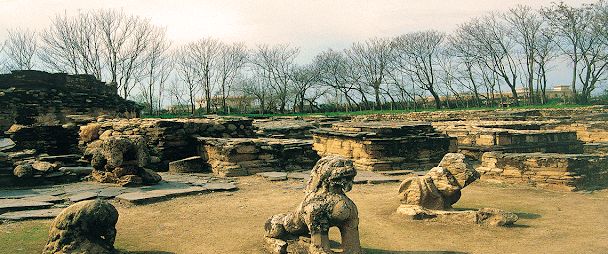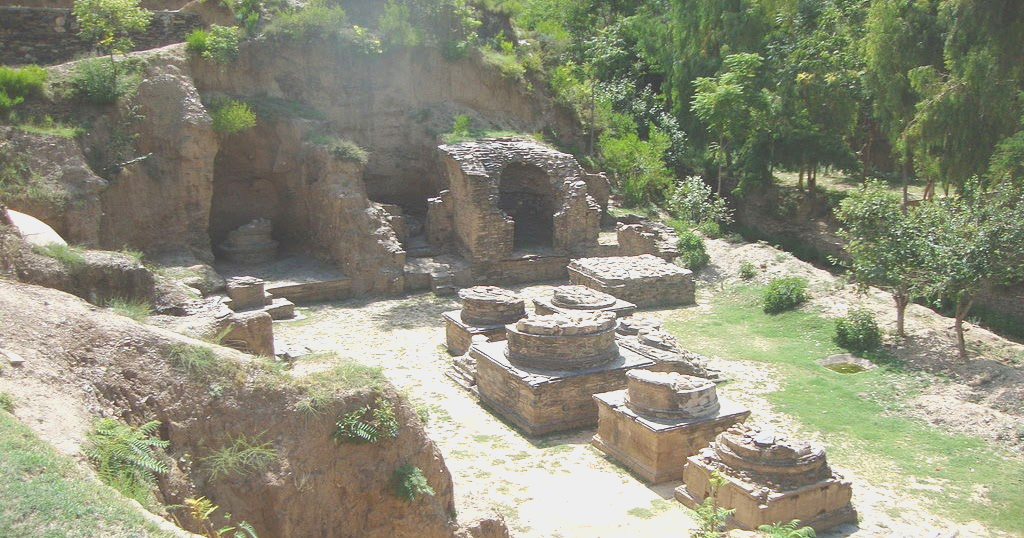Butkara Stupa, Another Masterpiece of Gandhara Civilization

The Butkara Stupa is found in the village of Butkara, nestled in the beautiful Swat Valley of Pakistan. Swat Valley is known for its stunning scenery and rich history. The stupa sits on a raised area in Butkara village, offering lovely views of the surroundings. To reach the stupa, one can go to Mingora, the largest city in the area. The stupa is a significant Buddhist site that provides insights into the past and the cultural heritage of the region. With its location in the Swat Valley, the stupa attracts visitors who appreciate history and enjoy the natural beauty of the area.
The strategic location of the Butkara Stupa within the Swat Valley enhances its allure, allowing visitors not only to explore the ancient Buddhist site but also to immerse themselves in the captivating landscapes and cultural heritage of the region.
With a rich historical background, the Swat Valley is renowned for its connection to ancient civilizations, most notably the Gandhara civilization, which left an indelible mark on Buddhist art and culture. As such, the Butkara Stupa stands as a tangible testament to this historical legacy, providing an intriguing glimpse into the past and fostering a deeper appreciation for the region’s remarkable cultural heritage.
The Butkara Stupa is a big round building that reaches about 23 meters (75 feet) in height, making it one of the tallest stupas around. It’s made of stones and bricks, with a strong inner part covered by a thick layer of plaster. The outside of the stupa is decorated with detailed carvings and sculptures, showing off the amazing skill of the ancient craftsmen.

One of the notable things about the Butkara Stupa is the fancy stone staircase that leads up to the top. The staircase has beautiful carved railings and supports, with designs that represent different symbols and ideas from Buddhism. As you go up the stairs, you can admire the careful work and artistry that has lasted for so long.
At the center of the stupa, there’s a square platform called a harmika. It symbolizes the spiritual world. It’s believed that there used to be a wooden umbrella or chhatra on top of the harmika, which represented the connection between heaven and earth and gave shade and protection. Even though the original structure is gone, you can still see traces of it.
the Butkara Stupa is a large and beautiful round building with a tall height. It’s made of stones and has detailed carvings on the outside. There’s a fancy staircase leading up to the top, and in the middle, there’s a square platform that used to have an umbrella on it.
The Butkara Stupa holds significant historical importance as an ancient Buddhist site. It represents the rich cultural heritage of the Swat Valley and provides insights into the region’s historical connections with the Gandhara civilization. The stupa’s architectural design, intricate carvings, and artifacts discovered during excavations contribute to our understanding of ancient Buddhist art and civilization. It served as a place of worship and pilgrimage for centuries, attracting devotees from far and wide. The Butkara Stupa stands as a testament to the enduring legacy of Buddhism and the historical significance of the Swat Valley as a hub of ancient civilizations.
The Butkara Stupa holds great sacred significance as a revered Buddhist site. It has been a place of worship and pilgrimage, offering solace and enlightenment to believers. With its intricate carvings and sculptures, the stupa inspires devotion and awe. It symbolizes Buddhist teachings of compassion, mindfulness, and the pursuit of enlightenment. The tranquil ambiance invites introspection and meditation. The Butkara Stupa is not just a physical structure but a spiritual beacon, connecting individuals to the divine and providing a sanctuary for spiritual growth. Its timeless sacredness continues to inspire and transform the lives of those who visit.
The sacredness of the Butkara Stupa extends beyond its physical boundaries, permeating the hearts and minds of those who visit. It stands as a beacon of spirituality, fostering a deep connection to the divine and offering a sanctuary for spiritual contemplation and growth.




